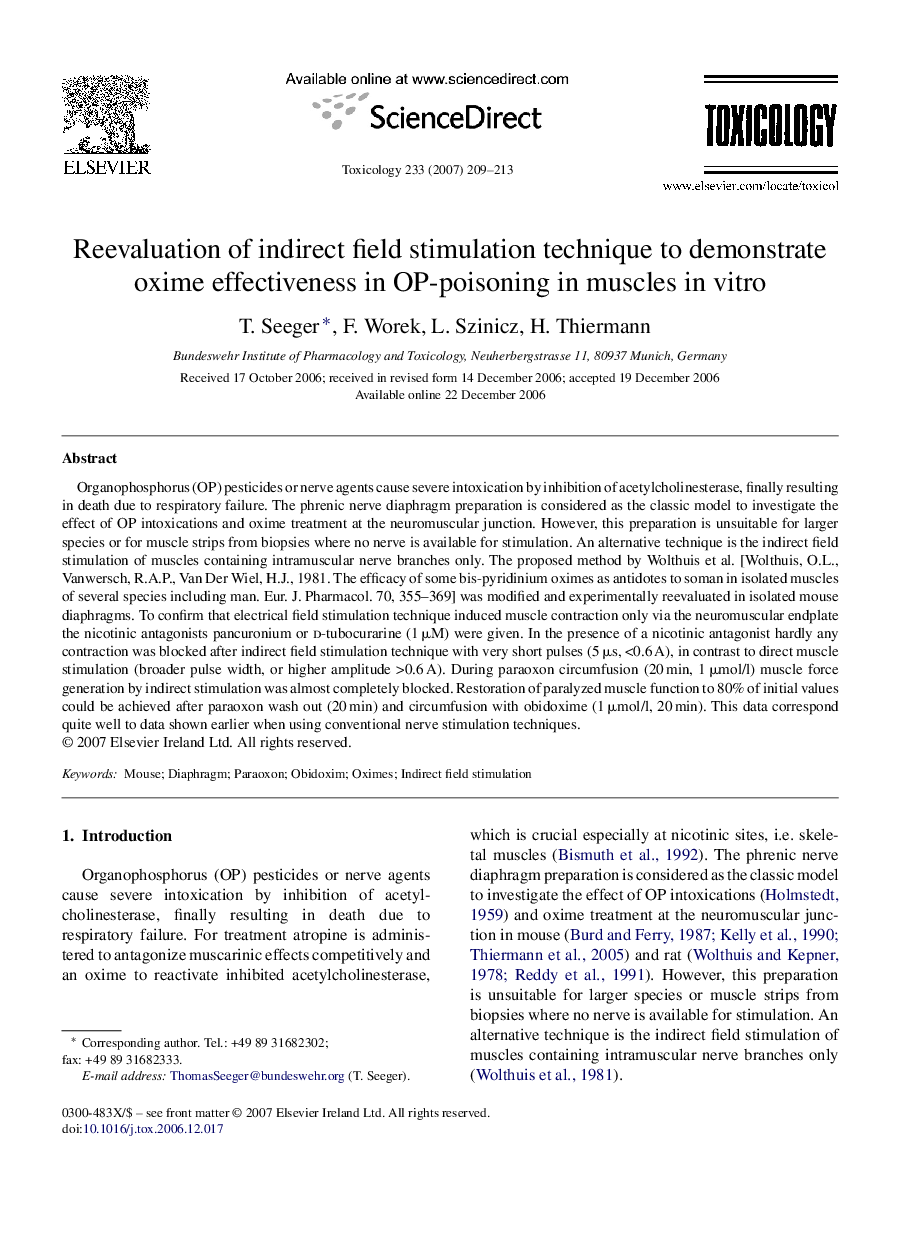| Article ID | Journal | Published Year | Pages | File Type |
|---|---|---|---|---|
| 2597880 | Toxicology | 2007 | 5 Pages |
Abstract
Organophosphorus (OP) pesticides or nerve agents cause severe intoxication by inhibition of acetylcholinesterase, finally resulting in death due to respiratory failure. The phrenic nerve diaphragm preparation is considered as the classic model to investigate the effect of OP intoxications and oxime treatment at the neuromuscular junction. However, this preparation is unsuitable for larger species or for muscle strips from biopsies where no nerve is available for stimulation. An alternative technique is the indirect field stimulation of muscles containing intramuscular nerve branches only. The proposed method by Wolthuis et al. [Wolthuis, O.L., Vanwersch, R.A.P., Van Der Wiel, H.J., 1981. The efficacy of some bis-pyridinium oximes as antidotes to soman in isolated muscles of several species including man. Eur. J. Pharmacol. 70, 355-369] was modified and experimentally reevaluated in isolated mouse diaphragms. To confirm that electrical field stimulation technique induced muscle contraction only via the neuromuscular endplate the nicotinic antagonists pancuronium or d-tubocurarine (1 μM) were given. In the presence of a nicotinic antagonist hardly any contraction was blocked after indirect field stimulation technique with very short pulses (5 μs, <0.6 A), in contrast to direct muscle stimulation (broader pulse width, or higher amplitude >0.6 A). During paraoxon circumfusion (20 min, 1 μmol/l) muscle force generation by indirect stimulation was almost completely blocked. Restoration of paralyzed muscle function to 80% of initial values could be achieved after paraoxon wash out (20 min) and circumfusion with obidoxime (1 μmol/l, 20 min). This data correspond quite well to data shown earlier when using conventional nerve stimulation techniques.
Related Topics
Life Sciences
Environmental Science
Health, Toxicology and Mutagenesis
Authors
T. Seeger, F. Worek, L. Szinicz, H. Thiermann,
